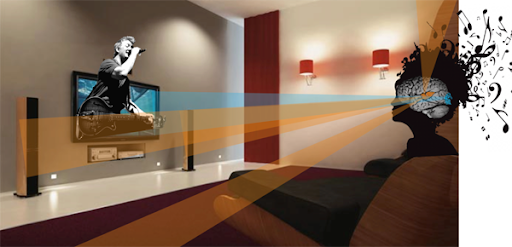What Is Audiovisual Integration?

Audiovisual integration Is the combining of audio and visual equipment for a better viewing and listening experience during a meeting. Specific tools are used to help facilitate the optimal coordination at large gatherings so that no one is left behind, and all the aims and expectations of the group are addressed.
Audiovisual Integration brings together two or more sources of information into a single format, presentation, or webpage to present a single message or concept. It is also a method of combining video and audio to form the content of the presentation. It can involve integrating the sound and images or merging them into a single vision. Often, it will combine the two media sources into one unique format so that the audience can understand the message much easier.
Other uses of Audiovisual Integration involve integrating textual and visual messages in the form of interfaces and publishing templates. To create more intuitive interfaces that work for the different audiences, a designer has to think about how they will be perceived and translate the visuals into readable and understandable language. Similarly, the content must be well defined and legible to the viewers to drive them to action.
Often, presenting the content which does not compel a viewer to act will get lost in the crowd and not keep people’s attention. Audiovisual Integration helps make sure that the content is engaging enough to engage viewers. By mixing visual and text in different ways, it gives the audience the option to be visually stimulated or not while reading the content and gives them the option to take a break, stop reading, or even skip it altogether.
Audiovisual integration is a technology that allows you to integrate the visual output from a computer onto a magnetic tape that can be played back. This allows the director or the person who is producing the video to change the graphic and audio contents at will. It also allows the person who is watching the video to adjust the playback device to see and hear everything as the director intended. The advantage of this is that the director can see all of the films in its completed state, thus reducing the time that is spent viewing footage.
One advantage of audiovisual integration is that it saves time when it comes to editing. In other words, the person who is creating the video or audio in question will not have to make any type of edit on the completed work because it is already being recorded onto magnetic tape. This makes it much easier for the person who is involved in the project to see what he or she needs to create the final product.
Audiovisual integration also provides the movie or television director with the ability to manipulate the data. This means that the person who is producing the video will be able to choose what is shown and not shown. Instead of having the entire project be edited by the director, the person who is making the video will have more control over how the video is going to be presented.
Stage lighting companies have come a long way in the last few years, and with more people lighting up the stage, it is now a very important aspect of live entertainment. Designing and setting up a proper Audio Visual system can be challenging, particularly if you have a tight deadline. That’s where a good stage lighting company comes in. They are highly experienced in overseeing the production process for Audio Visual Integration, offering quality and professional workmanship. A good stage lighting company provides quality services in audiovisual integration, stage lighting system, integrated control system, and digital conference systems, to meet your required needs.





